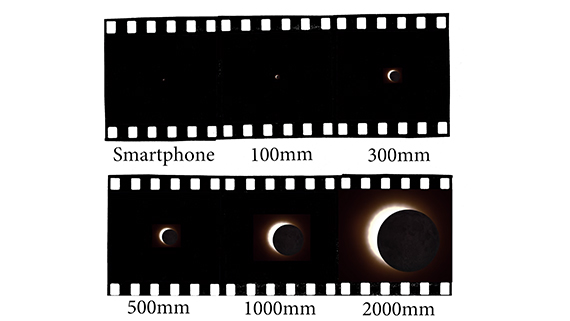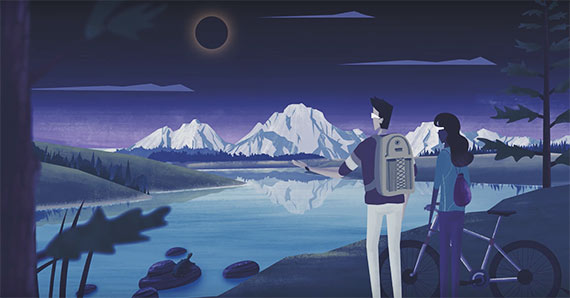Chances are, you’ve heard about the full solar eclipse that’s set to pass through North America on August 21, 2017. Across the US, small towns and cities alike are gearing up for the phenomena—the likes of which have not been visible to mainland Americans since 1979. But are you prepared to get the picture you’re after during the two and a half minute time frame when the moon will completely obscure the sun? Photography duo Tony and Chelsea Northrup provide this helpful rundown detailing everything you should take into consideration when the big day arrives:
Above all, make sure that you’re prepared. There are plenty of detailed maps available showing exactly where and when the eclipse will become visible in the 14 states lying in its path. Lasting 160 seconds in total, this event is not going to wait up for those scrambling to get their gear in check. Be sure that you have your camera ready to go well before the event takes place.
Safety
You’ll want to take every precaution you possibly can to keep your camera safe. Consider investing in some solar film, which is easy to cut to size and tape over a lens.
You may also purchase solar filters designed to screw on to the front of your camera’s front element. Keep in mind that plastic film filters will give you a sharper image, but a glass filter is less liable to tear or scratch. Don’t take the easy way out and attempt to substitute solar gear with a regular ND filter. Neutral density filters simply aren’t designed to block out invisible ultraviolet and infrared rays. Shooting directly at the sun without proper protection can damage a camera’s sensor irreparably (not to mention a person’s eyes).
Likewise, don’t look directly at the sun through the viewfinder of your SLR, even if you’re using solar film. Opt for the LCD live view instead.
Lens Choice
Another necessity for a solar shoot is a telephoto lens. Don’t worry about breaking the bank to get one; Opteka offers a 500–1000mm model for less than $200. In conjunction with a cropped sensor capable of magnifying shots, it’ll provide all the reach you need.
Although shooting with a telephoto lens will give you the best possible results, there are a few things that you should keep in mind. Use a wide open aperture if possible to facilitate longer exposures, but be wary of refraction that occurs at a lens’s smallest f-stops. Also be sure to utilize any shutter delay function that might be installed on your camera. Highly magnified images are especially susceptible to camera shake, and even the slightest touch can completely throw off your focus.
Stability
That being said, be sure that you’re attached to a sturdy tripod. Chances are that your handheld results will be lackluster at best. With an incredible event of this magnitude happening so rarely, you won’t want to risk making mistakes. For your own comfort, try to get your hands on a tall tripod capable of tilting toward the sky.
Last but not least, try to take as many pictures as you can manage. With such a small window of time to work with, doing so will dramatically increase your chances of getting a photo that you can be proud of. What’s more, a consecutive series of images can be stacked in post to create a more dynamic end product.
Do you have more tips, tricks, and advice on how to go about photographing an eclipse? Share in the comments.
Like This Article?
Don't Miss The Next One!
Join over 100,000 photographers of all experience levels who receive our free photography tips and articles to stay current:








Leave a Reply